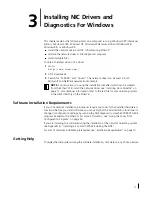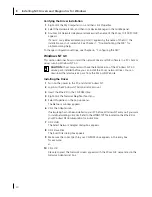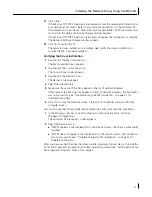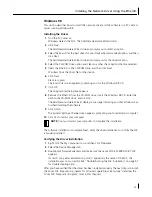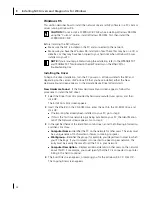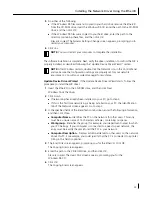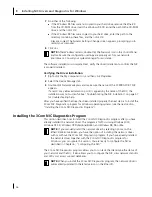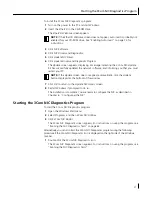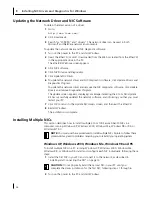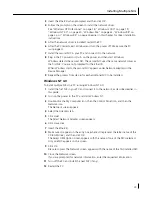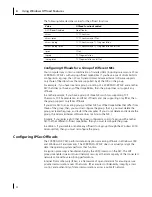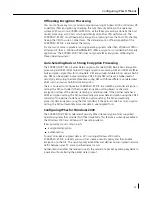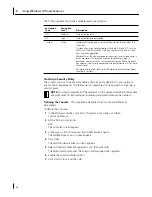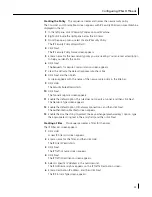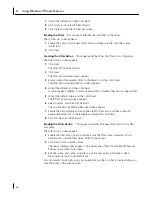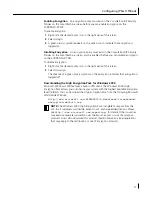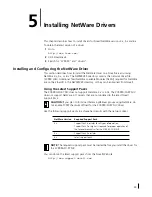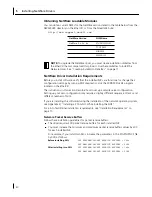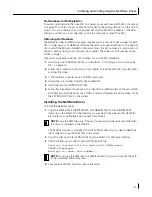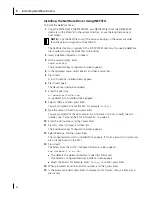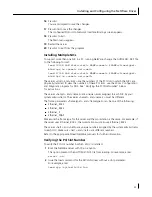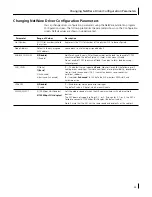
31
4
Using Windows Offload Features
This chapter provides instructions for enabling offloads in a Windows 2000 environment.
It also describes configuring IPSec offloads in a Windows 2000 environment.
The 3CR990-FX-97 NIC supports offload features for Windows 2000 and Windows XP in
an IP environment. The offload features are designed to enhance the Windows operating
system capabilities by off-loading key TCP/IP networking and security tasks from the
operating system:
For more information on enabling and disabling offloads for Windows 2000, see
Chapter 4, “Using Windows Offload Features.”
Enabling Offloads
Windows 2000 provides the capability to individually enable or disable each of the four
offload features. (The default setting for these features is
enabled
.)
To enable or disable individual offload settings in Windows 2000:
1
Right-click the My Network Places desktop icon and select Properties.
The Network and Dial-up Connections screen appears.
2
Right-click the Local Area Connection icon and select Properties.
The Local Area Connection Properties screen appears.
3
Click
Configure
.
The 3Com NIC screen appears.
4
Click the Advanced tab.
5
Select Enable Offloads in the Property list box.
6
Select the appropriate value in the Value entry box (shown in the following table) for
the desired offload state.
7
Close all open windows.
NIC Offload Features
Description
IPSec Offload
Reduces CPU utilization by allowing the 3XP processor and a crypto chip on the NIC to
perform data encryption operations.
TCP Segmentation Offload
Reduces CPU utilization by allowing the 3XP processor on the NIC to perform segmentation
of TCP packets.
NOTE:
Windows 2000 does not allow IPSec offloads and TCP Segmentation offloads for the same session. Though all offload types may
be enabled, TCP Segmentation offloading does not occur during an IPSec session.
IP and TCP Checksum Offload
Reduces CPU utilization by allowing the 3XP processor on the NIC to perform the checksum
calculation of TCP/IP and UDP/IP packets.
802.1P Packet Priority Offload
Reduces CPU utilization by allowing the 3XP processor on the NIC to perform the insertion of
the 802.1Q tag header into the packet.

